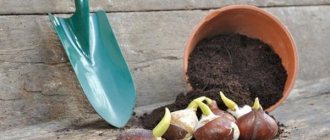When to start preparing chrysanthemums for winter
As a rule, only small-flowered and Korean chrysanthemums, as well as locally selected chrysanthemums that are adapted to unfavorable external factors and easily tolerate the winter period, are left to overwinter in open ground conditions on a personal plot. However, even such unpretentious and fairly resistant ornamental plants need to be looked after and properly prepared for the upcoming cold weather.
Preparing garden chrysanthemums for winter should begin in most regions of our country around mid- or late August. In more southern and northern regions, these dates shift, respectively, to September and early August. It is at this time that the plant begins to intensively prepare for the dormant period, and untimely measures can harm the crop and make it very vulnerable to frost.
Common mistakes new gardeners make when caring for chrysanthemums in the fall and preparing for winter
A common mistake described in most forums dedicated to growing flowers and fruit crops in a summer cottage is inattention. This includes:
- lack of feeding during a given period - approximately from mid-August to the tenth of September;
- digging up frost-resistant varieties and vice versa, leaving heat-loving varieties in the ground that require additional shelter after transplanting into a greenhouse or placing in a cellar;
- insufficient shelter or its complete absence when storing crops in open ground in winter.
As practice shows, caring for chrysanthemums in the fall and preparing for winter does not take as much time as initially expected. Depending on the number of bushes, the process does not exceed 4 hours. And when working with 4-6 hands, it even reaches a minimum.
About the need and features of covering chrysanthemums for the winter
It is important to remember that tall and large-flowered varieties, characterized by heat-loving conditions, are unable to winter in open ground conditions, so they are removed together with an earthen ball from the flower garden and placed in wooden boxes, which must be stored in winter in bright and cool rooms at a temperature of 2-6ºC and air humidity at 80%. It is also quite possible to preserve the mother bushes with a lump of earth, placing them tightly in rows on the floor in the cellar at a temperature range of 0-4ºC.
The most winter-hardy varieties and some varieties that overwinter in open ground conditions can simply be provided with shelter after applying fertilizer, as well as performing preventive treatment and pruning. In this case, as a reliable shelter for the winter, it is recommended to give preference to mulch made from brushwood or ordinary spruce branches. Such a shelter must be breathable , otherwise the decorative crop may dry out.
Small-flowered and Korean varieties and hybrids, as well as hybrid forms of domestic selection, can overwinter in earthen trenches covered with boards or slate, on top of which dry foliage is poured or covering material is laid.
Recommendations for caring for chrysanthemums in autumn
With the onset of autumn, you need to pay close attention to fertilizing, as well as the correct regime of irrigation measures, which will improve the cold resistance of the ornamental crop.
Irrigation regime and rules
Irrigation measures in the autumn are very important only if dry and hot weather has been observed for a long time. After watering the bushes, you need to perform traditional preventive spraying.
Such activities must be carried out no later than the first ten days of September or immediately after flowering. First you need to carefully examine the above-ground part of the garden flower, and if necessary, remove all diseased shoots and use chemicals designed to combat diseases and pests. It is important to remember that spraying is carried out in dry and warm, almost windless weather.
Autumn pruning of chrysanthemums
Immediately after complete or partial flowering, absolutely all stems must be cut off from garden chrysanthemum bushes, at a height of about a quarter from the surface of the ground. Pruning is done with a clean and sharp garden pruner , cutting at a right angle. Experienced gardeners recommend leaving shoots no more than 15 cm high, which serves as a kind of prevention of damage to the above-ground part of the ornamental crop by wintering plant parasites or pathogenic flora.
Feeding chrysanthemums in autumn
Immediately after flowering, chrysanthemums are depleted, and therefore especially in need of restoring the nutritional balance, so the plants need to be properly fertilized. During this period, it is best to use standard potassium-phosphorus fertilizers to feed the most frost-resistant garden chrysanthemums that overwinter in open ground conditions, which will significantly increase the resistance of the ornamental garden crop to the upcoming winter frosts. The compositions are diluted in strict accordance with the instructions supplied by the manufacturer.
Chrysanthemum propagation
Chrysanthemums are propagated by cuttings and dividing the bush. Some varieties can be propagated by seeds and even collected seeds, which then repeat the features of the mother plant, for example, dendranthema grandiflora.
Propagation by cuttings
Chrysanthemum stems cut in the fall will produce new shoots from their side buds in the spring. Shoots growing from the rhizome at the base of the main shoot can be cut into cuttings. This is done in early spring.
Stages of work:
- Cuttings are cut to a length of 5-6 cm.
- The lower end of the cuttings (about 1 cm) should be immersed in the rooting agent.
- The cuttings are planted in a pot filled with a mixture of peat and sand (1:1 ratio).
- Cuttings should be watered regularly and protected from drying out and temperature drops below 15 °C. The optimal temperature for cuttings is 16-18 degrees Celsius. Such conditions are provided in greenhouses.
Chrysanthemum cuttings should take root after 3 weeks. Then you can begin hardening (getting used to external conditions by frequently ventilating the greenhouse). You can transplant seedlings into unprotected soil at the end of spring, when the danger of frost has passed. In June, chrysanthemum seedlings should be planted in the ground.
Dividing the bush
Different types of chrysanthemums are divided at different times:
- blooming in late autumn, divided in spring;
- Blooming in summer, divide immediately after flowering.
The division should be done every few years. Having dug up the plant, it is carefully divided into parts with a sharp tool. If necessary, roots that are too long and overgrown can be trimmed a little.
Delenki should be planted in fertile, humus soil. In soils that are too light, sandy, chrysanthemums are more likely to freeze. They are also susceptible to overdrying.
From seeds
Chrysanthemums can be propagated by seeds. Dendranthema grandiflora or Siberian, Korean small-flowered and annual varieties are propagated from seeds. Seeds of annual varieties are sown in the ground in mid-late May, when warm weather sets in and the soil warms up to 14-15 degrees. Experienced gardeners sow chrysanthemums at the same time as cucumbers. These are heat-loving plants. Seeds germinate approximately 2 weeks after planting.
Planting chrysanthemums in autumn
Autumn planting of bush chrysanthemum has certain advantages, and therefore is more preferable when growing such a garden ornamental crop. The undoubted advantage of such planting is the ability to independently determine the color and size of the buds, as well as the shape of the bush, which is almost impossible to do when purchasing planting material in the spring.
The optimal time for autumn planting is considered to be the last ten days of September, which will allow the seedlings to take root and adapt well before the onset of winter. It is important to remember that high-quality planting material must have several well-formed root shoots at once. An insufficiently developed plant freezes in winter.
How to plant chrysanthemums in the fall (video)
Choosing and preparing a place in the garden
Garden chrysanthemums prefer flower beds located in well-lit areas with some elevation. In shaded areas, the flower crop will be suppressed and incapable of long-term, abundant flowering. Among other things, the crop is sensitive to the location of groundwater, so if its location is too high, it will be necessary to perform good drainage based on river sand.
The soil in the area allocated for planting and growing garden chrysanthemums should be loose, with a neutral or slightly acidic reaction. On too heavy soils, peat chips, humus and rotted manure must be added to flower beds. After the soil has been dug up and freed from weeds, it is necessary to dig planting holes into which complex fertilizers are added.
Most often, chrysanthemums are grown in open ground in rows. With this method of planting, it is very important to strictly adhere to the optimal distance between the plants being planted. As a rule, all low-growing and medium-growing bush varieties are planted at a distance of 30-35 cm from each other, and for planting tall varieties and hybrids, the distance between planting holes must be increased to half a meter. The standard depth of a planting hole should not exceed 35-40 cm. Each hole must be well drained, and after filling with fertilizers, it is watered abundantly with warm water.
Technology and planting timing
Planting garden chrysanthemums should be done in the evening hours, after sunset, or on cloudy days. It is best to plant purchased planting material in light, drizzling rain. Chrysanthemum bushes should be lowered into a hole with minimal depth. Tall seedlings will require the installation of a wooden or metal support.
After planting and fixing on a support, it is recommended to carefully pinch the seedlings, and on too hot days, shade the above-ground part. The rooting of garden chrysanthemum occurs quite slowly, so it is necessary to water if necessary.
If in the autumn it is not possible to plant a garden chrysanthemum in a flower garden in open ground, then it is quite possible to plant the purchased seedling in a regular plastic container. It is best to use a plastic box that is not too deep, but quite spacious for this purpose.
How to cover a multiflora chrysanthemum for the winter. In defense and glory of chrysanthemum
After reading an article about chrysanthemums in EDSR, I thought: how good it is that this happened now, and not when I first decided to start my first chrysanthemum bush. Otherwise I would have limited myself to just one bush! And only now, when I have accumulated a number of varieties of chrysanthemums that can already be called a collection, as well as some of that priceless, unmeasurable material that is commonly called experience, I read all these cautions and warnings. It seems that the author of the article is somewhat frightened by the “capricious” flower.
I felt offended for this grateful plant, and I decided to speak out in defense of a wonderful flower - the chrysanthemum. I bring to your attention my experience in growing chrysanthemums and I sincerely want these wonderful sunflowers to shine in every garden.
I will say a few more words in praise of chrysanthemums. There is an opinion that chrysanthemums bloom very late, and therefore not for long, so you should not grow them and waste time and energy on them. This is not true at all. Modern varieties of chrysanthemums are independent of daylight hours and bloom in summer. If the chrysanthemum began to bloom at the beginning of August, then three months will pass until the end of October!!! What other flower can bloom for so long without interruption?
How wonderful chrysanthemums look in the autumn garden! Against the background of muted colors of autumn, when there are no longer bright accents, chrysanthemums seem to sing a hymn to bright colors, telling us: “Don’t be sad, autumn is a time of joy!”
How to preserve chrysanthemums in winter (video)
A feature of the root system of an ornamental plant is its close location to the soil surface, so there is no need to purchase a deep container or flower pot. After planting, the above-ground part is trimmed to approximately two-thirds of the total height. Until spring, the seedlings are kept in the basement, at a temperature within + 5-6°C. During storage, periodic irrigation measures must be carried out, and with the onset of spring, the decorative crop with an earthen clod is planted in a permanent place, in open ground.
How to prune chrysanthemums after flowering
Chrysanthemum bushes are watered generously with water 3-5 days before pruning. During dry autumn, at least 5 liters of water are poured onto each bush. Moisture recharging will help plants tolerate pruning without damage. After pruning, the plants are not watered to prevent infections from entering fresh wounds on the stems.
In order for the plants to go into winter not frozen and weakened, pruning is carried out after light night frosts have lasted for 2-3 days, even if the flowers still have buds ready to bloom.
When pruning bushes, cut out all the stems, leaving stumps 5-10 cm high. After this, loosen the soil in the root zone and cover the ground with vegetable mulch. The stumps should be completely covered with dry grass or leaves.
Frames are installed above the plants, onto which insulating or temporary protective fabric is pulled in case of severe frosts or prolonged rains.











